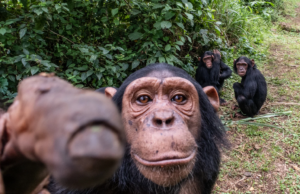Educational TV for monkeys
 Caption: CFER3 SÃO PAULO SP 24/03/2010 FERNANDO REINACH VIDA& Foto para recorte do colunista Fernando Reinach. FOTO: Clayton de Souza/AE
Caption: CFER3 SÃO PAULO SP 24/03/2010 FERNANDO REINACH VIDA& Foto para recorte do colunista Fernando Reinach. FOTO: Clayton de Souza/AE
By Fernando Reinach, Biologist (O Estado de SP newspaper)
In Aldeia, countryside of Pernambuco state, in Brazil, British and Austrian scientists demonstrated for the first time that monkeys can be educated through television. I suppose you know how to peel a tangerine, but you remember how you learned? Most likely it was during your childhood, around a table, watching an adult shelling and distributes the buds. And it’s very likely that you have peeled a tangerine in front of a child, passing this knowledge to the next generation. This ability to learn from other individuals of their species, accumulate knowledge and pass it down through generations is one of the major differences between humans and other animals.
It’s what we call cultural heritage. If all living beings have their genetic heritage, we have provided genetic and cultural heritage. The accumulated cultural information for our species is so great that it was necessary to create specific social mechanisms to convey this information to our children, such as schools and universities.
Until recently it was believed that cultural heritage was exclusive to humans, but in recent decades it has been slowly discovered that some other species have rudimentary mechanisms of transmission of learning from one generation to another. And now it was discovered that marmosets of Pernambuco are not only able to learn directly observing their group, but are also able to learn by watching a movie shown on television.
The experiment is ingenious. First scientists went to a zoo and trained some tufted white – marmosets (Jaccus callithrix) to open a container made of transparent plastic. This container, which has the size of a small shoe box, can be opened by pulling one side that open like a drawer or releasing a latch and lifting the top cover. After the marmosets learned to open the so-called “artificial fruit”, scientists filmed the marmosets opening the box. So they set up two videos, the first showing, in various angles, the marmosets opening the drawer and the second containing several scenes of marmosets opening the lid. In addition, they took several pictures of marmosets beside the box.
In the next stage, they went to a native forest near village where several families of marmosets live and built a kind of small stage in the forest, over the trees. In the backstage they put a TV screen that could display one of the two videos (marmosets opening the lid or drawer) or photos of marmosets on the side of the box. On the surface of the stage, they put the transparent box (the same as in the movies). Then, they tuned the TV on, repeating the same movie, and left. A video camera kept on recording the behavior of marmosets approaching the stage.
What they observed in the videos was the following: the monkeys immediately approached the small stage and walked through it. When the screen only displayed photographs, they approached the transparent box, manipulated, but could not open. When the video showed another marmoset opening the box, they were watching the movie and then went to the box and manipulated and, in most cases, could open the “artificial fruit”. But most interesting is the way they opened the box (lifting the lid or pulling the drawer) depended on which movie was displayed. When the film showed the marmoset pulling the drawer, they pulled the drawer. When the film showed them lifting the lid, they lifted the lid. In other words, they mimic the behavior shown in the film.
The results demonstrate that marmosets are able to learn to solve a problem by observing other members of the species performing the task on a television screen. It was already known that monkeys learn from each other by imitating the behavior of companions, but it is great news the fact that they understand what is going on in a television image and are able to copy what is shown in a movie.
This demonstrates that the monkeys are coming to possess the skills to start the cultural transmission of information. I wonder to what extent an educational TV made by us, especially for the monkeys, can trigger a cultural process in these animals?

 Español
Español
 Português
Português








